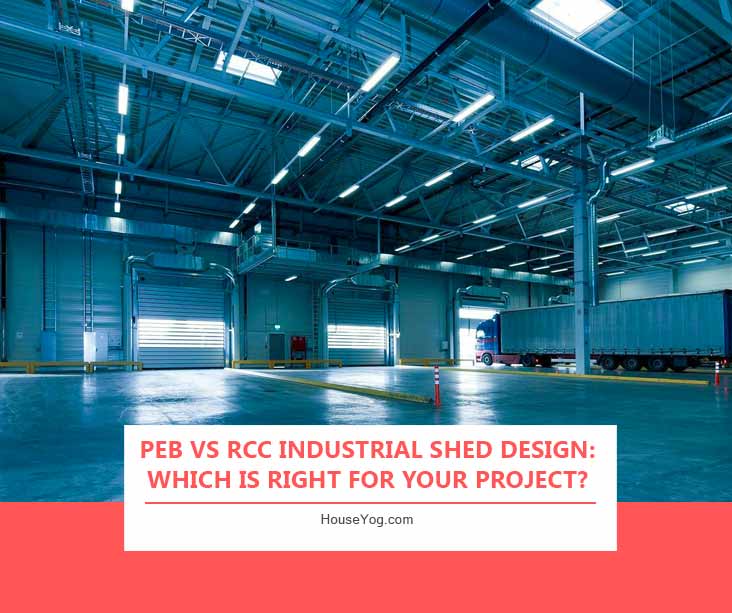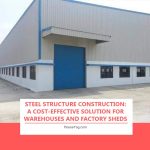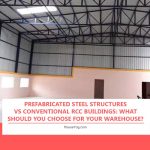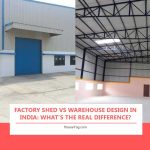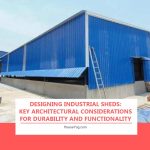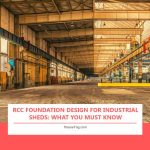When planning a warehouse, factory, or storage godown, one of the first and most important decisions is choosing between a PEB (Pre-Engineered Building) and RCC (Reinforced Cement Concrete) structure.
Each option has its advantages, limitations, and cost implications. In this guide, we break down the key differences to help you make an informed choice, whether you’re building in Bihar, Jharkhand, West Bengal, or anywhere in India.
What is a PEB (Pre-Engineered Building)?
A PEB is a steel structure that is pre-designed and pre-fabricated in a factory and assembled on-site. It’s known for fast construction and flexibility.
Key features of PEB sheds:
- Made of high-tensile steel
- Lightweight frames with long-span capabilities
- Customizable for industrial, commercial, or storage use
- Roofing done using Tata/Jindal sheets or similar
What is an RCC Structure?
RCC (Reinforced Cement Concrete) is the traditional method of building using concrete and steel reinforcements, cast at the construction site.
Key features of RCC sheds:
- Rigid and highly durable
- Better soundproofing and insulation
- Longer construction timelines
- Suitable for heavy-duty applications (multistoried, high load)
PEB vs RCC: Head-to-Head Comparison
| Factor | PEB Structure | RCC Structure |
| Construction Speed | Fast (2x faster) | Slower |
| Cost (per sq ft) | ₹900–₹1,500 | ₹1,400–₹2,200 |
| Material | Steel + prefabricated components | Concrete + on-site fabrication |
| Maintenance | Low | Moderate |
| Flexibility | High (easy expansion) | Limited |
| Foundation Load | Lighter | Heavier |
| Design Complexity | Easily customizable | Structural limitations |
| Ideal For | Warehouses, workshops, storage | Multi-storey or long-term buildings |
Which One is More Cost-Effective?
In most small to mid-scale industrial projects, PEB is significantly more cost-effective, especially when speed and budget are key concerns.
However, RCC may make sense for:
- Multi-story factories
- Very hot regions (for insulation)
- Permanent structures where resale or relocation isn’t expected
Whether you choose PEB or RCC, proper layout and planning are crucial. Explore our site planning services to get started the right way.
Sustainability & Material Use
If you’re looking at eco-friendliness, PEBs win again — since steel is recyclable and generates less on-site waste.
RCC uses large volumes of sand, cement, and aggregates — not always sustainable or easy to source, especially in rural Bihar or interior Odisha.
Design Flexibility & Custom Use
- PEB allows for wide spans without columns (great for storage, loading areas)
- Easier to modify or relocate if needed
- RCC is rigid but better suited for structural-heavy installations
Example:
In Ranchi, a small pharma company used a PEB with insulation panels and completed construction in 60 days. In contrast, an RCC project of similar size in Patna took nearly 5 months.
Foundation Requirements
PEBs exert less structural load, which means:
- Smaller footings
- Lower soil reinforcement
- Less excavation cost
For RCC, a stronger foundation is mandatory, especially in soft-soil areas like Muzaffarpur or Bhubaneswar.
Final Recommendation: Which Should You Choose?
| Scenario | Recommended Option |
| Need quick setup | PEB |
| Budget is limited | PEB |
| Structure needs relocation | PEB |
| High thermal insulation needed | RCC |
| Multi-floor or permanent | RCC |
| High load-bearing zones | RCC |
Final Thoughts
Choosing between PEB and RCC is about balancing cost, speed, and your long-term needs.
If you’re planning to construct a factory shed, warehouse, or commercial unit in Bihar, Jharkhand, Odisha, or West Bengal, consult with an expert who understands local soil, material costs, and approval norms.
Planning a warehouse, factory, or storage unit? Learn more about our industrial shed and steel structure design services available across Bihar, Jharkhand, and nearby states.
Our team at Houseyog specializes in PEB and RCC shed design and planning. We’ll guide you on the right choice – from structure to cost estimation to execution.Call us at +91 75960 58808 today!
